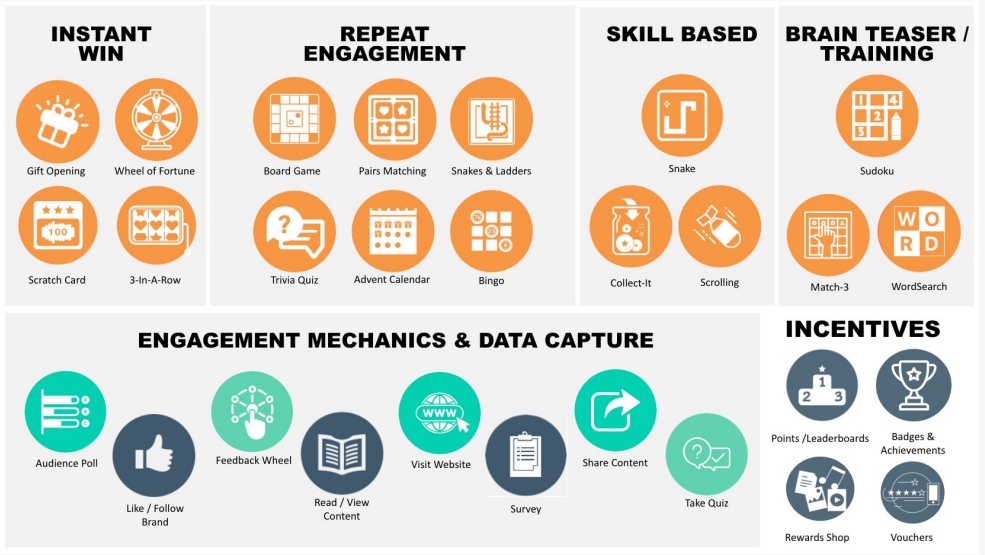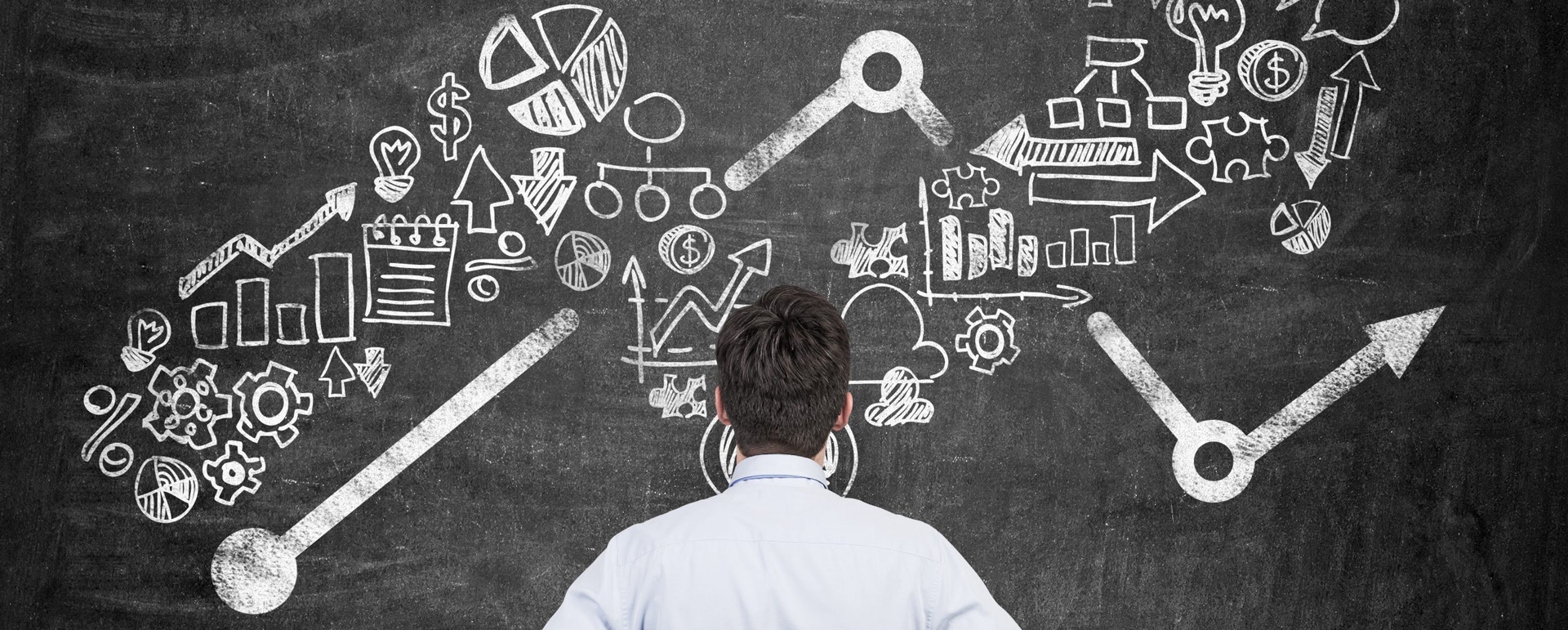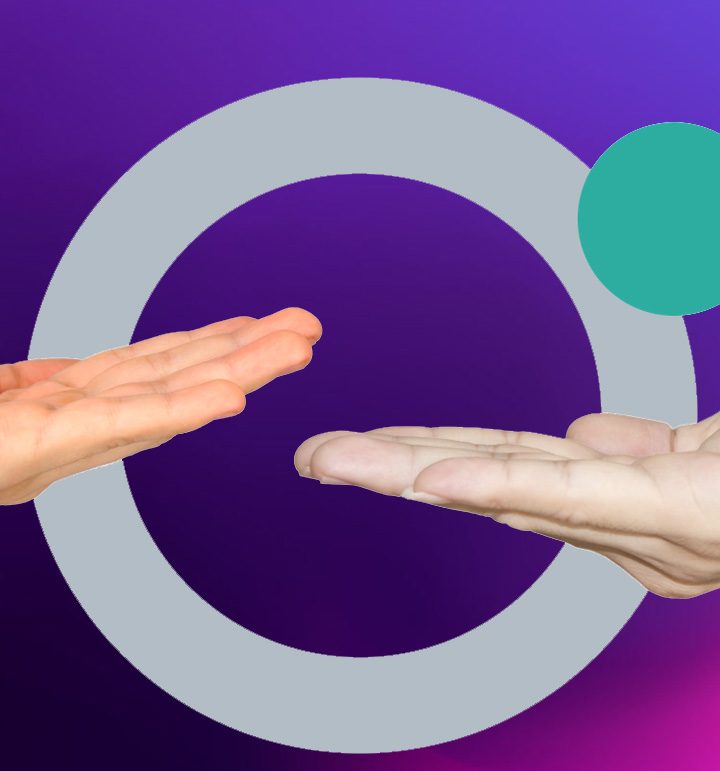STEVE ROGERS / 3 JANUARY 2024
Today standing out is tough. The good news is that gamification provides a refreshing customer experience that captures attention and delivers on KPIs. But you might be wondering, how does gamification in marketing work?
The bottom line: Gamification takes strategic planning and flawless execution.
In this blog, we examine how gamification in marketing works, with expert tips from 3radical’s founder, David Eldrige, and Director, Rebecca Trivella.
Let’s get to it.👇
How gamification in marketing works
Gamification can build relationships, engage customers, increase cart size, and more. Of course, the hard part is to create a gamification campaign that delivers the KPIs you need.
So to understand how the process works, we sat down with 3radical’s Rebecca Trivella and David Eldridge to break down the process into simple steps.
Here’s how you create a gamification campaign that delivers the results you need:

Stage 1: Assess objectives
Like any marketing campaign, we need to start with a clearly defined goal. So consider what is your ultimate goal: Increased engagement? More sales? Increased cart size? Get specific. Then once you’ve defined your core objective, prioritise any secondary aims.
Improving brand sentiment is fantastic, but if your primary measure of success is sales, keep that top of mind. With your goals crystallised, we can design engaging, goal-aligned challenges and rewards. 3radical’s Rebecca Trivella says it best:
“The key is aligning gameplay with business outcomes. Avoid gamification for gamification’s sake. Each mechanic should ladder up to your KPIs.”
When done right, gamification can help take your marketing campaigns to the next level.
Stage 2: Define target behaviour
For each business objective from stage 1, list the target actions that will lead to success:
- More sign-ups? Identify how users will be prompted to subscribe.
- More engagement? Determine what behaviour equals engagement for your audience.
- Increased sales? Think about what prompts your audience to buy, such as offering discounts, special sales, or giveaways.
- Cart completion? Consider what motivates your audience to complete purchases.
To measure impact, we also need metrics. How will you know your gamified campaign is working? Track the key user behaviours and outcomes that ladder into your KPIs.
Here’s what David Eldridge has to say: “The key is tying gameplay directly to behaviours that ladder up to business goals like conversions, engagement, referrals, and loyalty.”
Stage 3: Identify user motivations
Going one step deeper than stage 2, next we consider what makes your audience tick. Start by outlining your target demographics and what motivates them. If you have a broad audience, you might find that different groups may respond to different incentives.
For this, it helps to consider player psychographics – achievement-driven thrill-seekers, social connectors, problem-solvers, etc. The key is to analyse your users and choose mechanics that cater to their needs.
Achievers will love leaderboards and challenges. But if competition doesn’t fit your culture, try progress bars or badges instead.
Rebecca Trivella’s top tip: “Finding the right game elements for your target audience is powerful. Appeal to their motivations, but stay true to your brand. Gamification should excite AND align with business objectives. It’s a balancing act.”
It all comes down to understanding your audience. Get customer input if you can. When gameplay resonates on a personal level, engagement soars.
Stage 4: Choose the best game mechanics

Armed with the insights from the previous stages, you should have a good understanding of which mechanics are going to work well for your target audience. When choosing game mechanics, start by listing mechanics that logically map to your target behaviours.
- Need to drive more sign-ups? Consider points, badges, or progress bars awarded for creating an account.
- Looking for social sharing? Make that an action that earns rewards.
Next, evaluate mechanics that cater to different user motivations. Leaderboards fuel competitive spirits, while creative contests allow self-expression.
David Eldridge says: “It’s also key to think broadly about mechanics that align with your brand. An outdoor company could design a digital scavenger hunt for product discovery. A nonprofit could create a philanthropic choose-your-own-adventure.”
By keeping your business objectives and target behaviours central, you can choose game mechanics that significantly increase engagement.
Stage 4: Design your game
You’ve set goals, identified behaviours, understood your players, and chosen your mechanics. Now it’s time for the fun part. Actually designing your gamified marketing experience.
Start by mapping out the player’s journey. Consider the strategic points where challenges are completed and rewards are unlocked. Many brands find it really helpful to partner with a gamification specialist like 3radical who can provide creative direction and technical expertise.
Rebecca explains: “When you work with specialist partners, like 3radical, we bring years of experience designing and implementing gamification campaigns that deliver on your KPIs. We set KPIs from the outset. We then measure the results. And, if needed we will then adjust the experience to optimise the outcomes.”
In other words, gamification specialists know how to create a successful campaign that achieves business goals.
Stage 5: Launch your gamification campaign (and collect data)
At this stage, the time has come to officially launch your gamified marketing campaign. One thing we always recommend is to monitor data closely, especially at launch.
For this, you can leverage the gamification platform’s capabilities for optimising gameplay through data and testing. Specialists like 3radical provide powerful analytics and reporting.
Importantly, use your gamified experience to gather zero-party data like behaviours, preferences, and motivations directly from engaged users. This data is extremely valuable for personalisation and marketing. (More on this here.)
Stage 6: Review and adjust
To make sure you meet your business goals, it’s important to review and adjust the gamification experience to optimise outcomes.
For David, it’s all about examining the data. “Sometimes, you’ll need to adjust the experience to optimise outcomes. An example of that is perhaps seeing a drop off at question 7 or 8 questions, so we tighten to 7 questions only. Or we run an A/B test on which game mechanic the audience prefers (like spin the wheel or scratch card).”
The key is to track and analyse how the gamified experience is performing, especially in the days and weeks after launch. That’s how you build a gamified experience that delivers on the KPIs you set.
Real-life examples of how gamification in marketing works
We’ve touched on theory, but before we delve deeper, let’s look at some results. Here are just two simple case studies…
Michael’s generated $400k through its reactivation campaign
Michael’s – the largest arts & crafts retailer in North America, activated more than 80k lapsed email addresses with the use of a survey and holiday-themed advent calendar. Plus, through this approach, they gained valuable, previously uncapturable, earned data needed to create personalised and highly relevant marketing communications.
The result?
- 2,500 unique data points captured
- 41% engaged with experience
- $400k estimated value to the brand
Then there’s Matalan.
Matalan gains 4x higher engagement with gamification
Matalan – Matalan injected marketing gamification into their holiday shopping promotion with a “wheel of fortune” game. Customers could spin for a chance to win prizes while browsing the holiday product range. Additional gaming elements encouraged visitors to refer friends or follow
Matalan on social media for extra spins.
The campaign demonstrated how gamification can spike engagement and drive traffic by making the shopping experience more entertaining. The wheel of fortune game put the fun back into holiday shopping at Matalan.
The result?
- Click-through rate increased from 1.5% to 7%
- 17,000 people shared the game on social media
- 80% of consumers said the prizes encouraged them to visit Matalan online or in-store
In both of these examples, you can see that gamification creates mutually beneficial transparency between brands and users.
- Customer: willingly provides data for a more personalised and relevant experience
- Retailer: uses zero-party data to build more ROI-generating campaigns and nurtures a relationship of trust and engagement
So, to create a gamification experience that drives real results rather than vanity metrics, start thinking about who you need to support you.
Achieve your marketing goals with gamification in marketing
Gamification takes marketing engagement to the next level. But it requires a thoughtful strategy and flawless execution. As we’ve covered, the key is aligning gameplay with business goals:
Define objectives and target behaviours, understand customer motivations, choose mechanics that ladder up to real impact, and review and adjust to optimise results.
With the help of specialists like 3radical, you can craft immersive experiences that provide value on both sides. Customers have an engaging experience and unlock rewards. Brands achieve marketing goals while also gaining zero-party data.
The results speak for themselves. Michael’s reactivated 80k lapsed emails and generated $400k. Matalan increased engagement 4x with a gamified shopping promotion.
But gamification isn’t a one-size-fits-all solution. Take the time to map gameplay to your unique goals and audience. And turn to specialists like 3radical if you need assistance bringing your gamified visions to life. Just remember – fun and purposeful gameplay is the key to success.
If you are ready to get started, you can talk to sales today.
Looking for more?
Subscribe to our LinkedIn newsletter or check out our resources to help expand your knowledge and skills:





